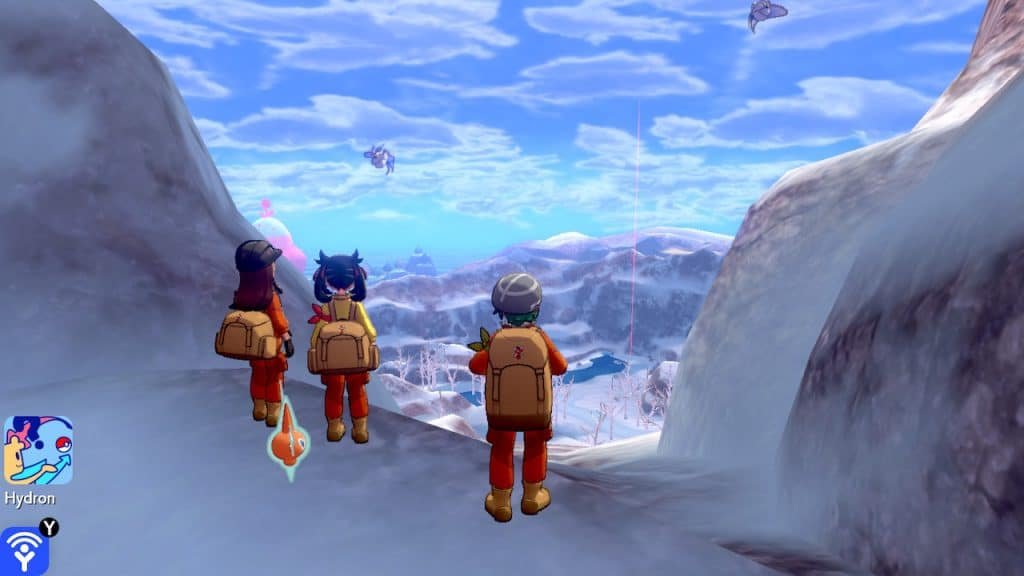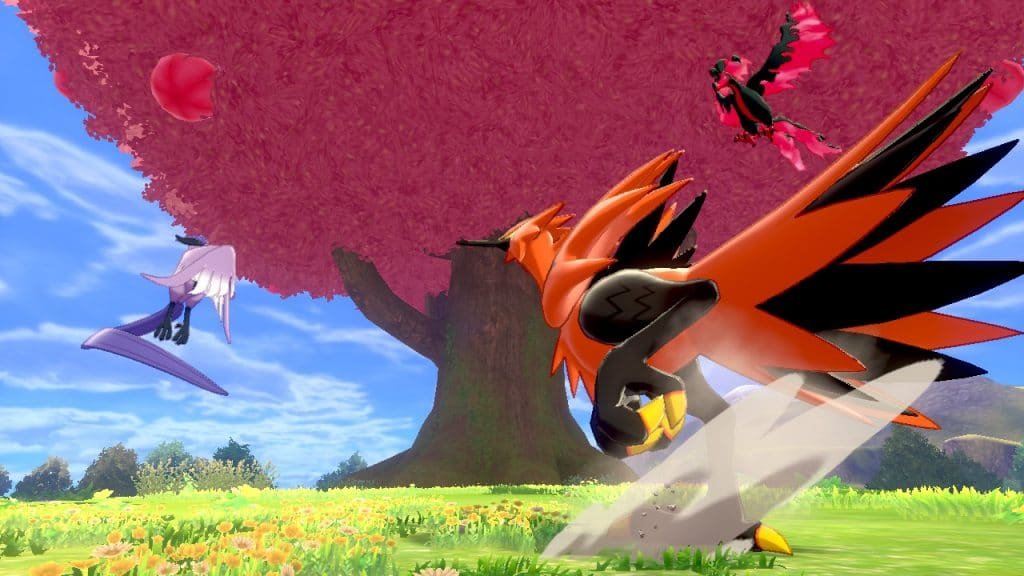Quick View
Release date: October 22, 2020
Price: $29.99 in bundle
Rating: E (Everyone)
Platform: Nintendo Switch (store page)
What’s The Crown Tundra All About?
It's 2020, and Nintendo has finally – kind of – caught up with how game expansions are done in the new world. Following the release of Sword & Shield (check out our review of it here), we saw a downloadable excursion this summer to the Isle of Armor (that review lives here). Now, with the season's first snow having just hit my city, they've served up an expeditionary hike through the snow-laden Crown Tundra. How does it stack up against its sister expansion, and how does the expansion pass as a whole stack up against the old practice of releasing an entire third game?
Here We Go Adventuring Again
Real talk?
Here's the thing about Pokémon as a franchise: after twenty-four years (!) on the market, you probably already know what you're getting into. Kid gets dropped into an idyllic country teeming with friendly monsters, has to gather them all together to form a chart-topping super-group.
The Crown Tundra doesn't upset that even a little bit. Instead, it's playing into a lot of the series' greatest strengths.
Over the first half-hour or so of play, it feels all too much like the rest of Sword & Shield: you're accosted first-thing off the train by an NPC who's cartoonishly excited about everything around him, then you're led by the nose to the expansion's newest feature, followed by a long stint of dialogue explaining the setting. It's the kind of hand-holding pace that can drive series veterans up the wall.
But then, it… stops. Once you're out of that first village with a task list in hand, there's nothing stopping you from doing almost all of The Crown Tundra‘s new content at your own leisure.
For the next six hours of gameplay, I was essentially totally on my own. I upturned every rock and hiked to the island's snow-capped peaks. I caught three dozen old friends. And then and only then did I start on anything like a structured task, which only involved the occasional line or two over the phone before letting me off the hook.
It reminded me in its way of the more hands-off approach of some of the series' older titles, but handled in the frame of a modern game.
It felt great.
Iffy Focus
The major “hook” of The Crown Tundra is that it's around capturing “Legendary” Pokémon. In this series, that's normally an extra-curricular task for after the main story wraps up, so it makes sense as a focus for post-launch content. On the other hand, that creates as many drawbacks as it does upsides.
Namely: it kind of cheapens the mystique around them. The original idea around “legendary” Pokémon is that they were game-bustlingly strong, and unless you were a particularly thorough eight-year-old, you might first hear about them from playground hearsay. The games never ensured that you would run into Mewtwo or Entei; you had to put in the legwork yourself to seek them out. They felt like a major discovery.
This is, of course, very much an “uphill-both-ways” grouse from a two-decade series veteran. But I think it holds some water; just think about how routine “destroy-the-world” threats have become in major blockbusters. By turning the so-called Legendary Pokémon into guaranteed encounters now, they become checkpoints rather than video-game cryptids. It's something that the series has struggled with for some time now, and Crown Tundra only aggravates things. Not only are they plentiful overall, but once again a main plot thread railroads everyone into obtaining at least two.
And this is before getting to the expansion's “Dynamax Adventures”. They're presented as a “dungeon” counterpart to the game's “raids”, putting you in a party of four to go spelunking. In practice, they play like multi-part gauntlets of the game's already-sluggish raid battles, and I felt exhausted after just one. Plus a legendary Pocket Monster reliably appears at the end of each “run”, furthering the notion that none of them are particularly unique.
Positive Reversion
On the other hand, they aren't mandatory party members in the same way that Kubfu is in the Isle of Armor – and the game doesn't quite railroad you into them, either. Aside from the banner monster Calyrex, all of the overworld encounters will make you do at least a little legwork.
One set requires you to thoroughly search the environment for tracks (which are notably easier for my colorblind eyes to spot than Isle of Armor‘s hidden Diglett). Another asks you to solve (fairly simple) riddles, which you are not given patronizing hints about. The last requires you to actively track them down and corner them in the overworld, making the series' most engaging spin yet on a “roaming” monster.
I'm not a huge fan of them being so plentiful, but I'll be darned if their subquests didn't keep me strung along. It's an echo of how older games would point you in a direction and then let you go, self-directed. A couple encounters even have next to no in-game messaging around them, re-igniting the possibility of those lovely playground rumors. Or they would, if the modern internet didn't cut their legs out from under them. Ah, well. On the other hand, you still have to do a little bit of trading to fill your Pokédex like it's 1996, since the game will force a few unique either-or decisions on you. This might aggravate some completionists, but thankfully nothing is restricted based on which game you chose eleven months ago.
And, like Isle of Armor, there's absolutely a greater sense of exploration. The setting is once again an open space with free camera control, just like the base game's Wild Area. This time, though, the region feels more path-based. On one hand, it can feel claustrophobic, like a tourist's prescribed hiking route to the summit. On the other, it balances structure with openness in a way that the series hasn't successfully done since X & Y in 2013; I legitimately got turned around and lost a couple of times – but not for long. I'll choose to chalk that one up to how exploring a foreign wilderness should feel.
This could be to personal taste – I know at least one player anecdotally who loved the more spacious Isle of Armor. But the game now having both experiences – navigable paths and wide fields – means the expansion pass as a whole can successfully cater to players of different taste.

More of What You Love
Outside of new campaign content, The Crown Tundra continues to improve the games' conveniences just as the Isle of Armor does. Some valuable items for post-game training, like nature-changing “mint” foliage and passive-ability-altering goodies, are renewable resources in the tundra. If you don't mind running the raid gauntlets, your chance of finding an off-color “shiny” Pokémon is substantially higher there.
And then there's the post-game Star Tournament, which rolls even more of the game's NPCs into a doubles-matches elimination bracket. It is, bar none, the quickest way to earn money in the game now, drastically speeding things up for power-users.
Is it unfair to restrict these conveniences to people who paid extra for the expansions? Probably, yes. But chances are the people who would really benefit from these additions have already bought the expansion pass anyway.
Because, ultimately, the entire Expansion Pass is just digging deeper into what the core players love about Pokémon. It sands off a few corners and adds some post-game content to satiate our cravings.
And, let's be honest, that's what a lot of us got excited about when the series would release a “third version” like Emerald or Ultra Sun & Moon. The core story is kinda just there; most aren't huge on replaying it with a few little changes. We can just drum up a new user profile for that nowadays. The real get is features of convenience and the wholesale-new content, and that's exactly what the Crown Tundra is providing.
Doubling Down
Like I said back last November, the core Pokémon series has three key competencies:
- Exploring
- Catching Pokémon
- Battling Pokémon
Well, navigating Crown Tundra feels like a 3D conversion of the older handheld games at times. A little windy, but self-driven, peppered with vignettes to discover, and home to a few truly excellent vistas.
It's all about catching Pokémon, from track-and-conquer subquests to a rich stable of returning monsters.
And its additions only serve to lower the barrier to entry on player-vs-player battles, which have been frustratingly obtuse for too long.
The bugbears from Sword & Shield are still there, sure. It's graphically imperfect, I still can't catch a Mareep, and Nintendo's online matchmaking still lives in 2004.
So if you're a Pokémon afficianado, looking for more Pokémon?
It'll it the spot.
Geek to Geek Rating: 4/5


